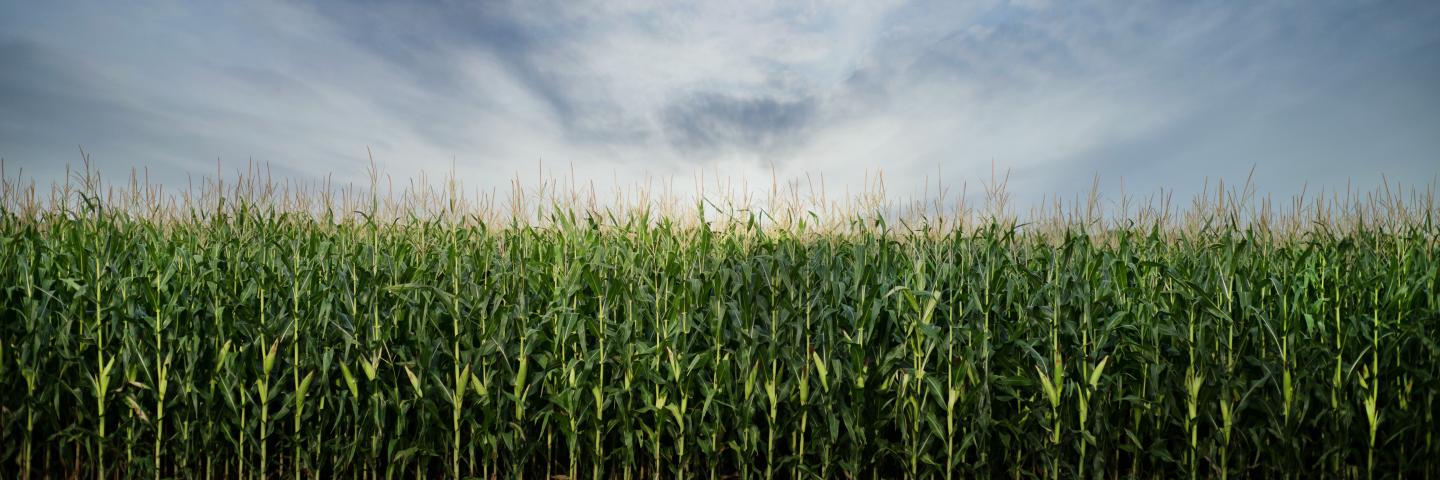
NRCS provides national leadership and technical assistance for the conservation of our natural resources to ensure the continued production of food and fiber.
Cropland includes areas used for the production of adapted crops for harvest. Two subcategories of cropland are recognized:
- Cultivated cropland comprises land in row crops or close-grown crops and also other cultivated cropland, for example, hay land or pastureland that is in a rotation with row or close-grown crops.
- Non-cultivated cropland includes permanent hay land and horticultural cropland.
Natural Resource Concerns for Cropland
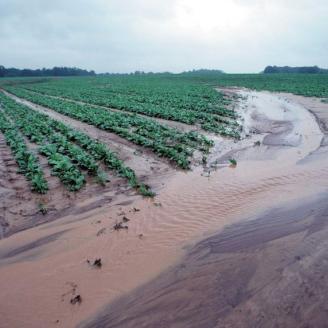
Erosion by wind and water
Soil erosion involves the breakdown, detachment, transport and redistribution of soil particles by forces of water, wind, or gravity. Soil erosion on cropland is of particular interest because of its on-site impacts on soil quality and crop productivity, and its off-site impacts on water quantity and quality, air quality, and biological activity.
The economic impact of mitigating soil erosion significantly burdens the agri-business sector and the Nation as a whole. Dust contributions to the atmosphere and delivery of sediment, nutrients, and chemicals to water resources are primary environmental concerns addressed by public policy makers and the stewards of our working land has important long-term implications for cropland sustainability, natural resource condition and health, and environmental quality.
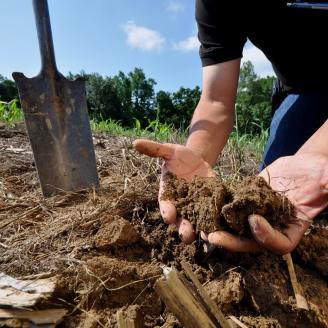
Maintaining and enhancing soil health
Managing for soil health is mostly a matter of maintaining suitable habitat for the myriad of creatures that comprise the soil food web. This can be accomplished by disturbing the soil as little as possible, growing as many different species of plants as practical, keeping living plants in the soil as often as possible, and keeping the soil covered all the time.
Soil is managed to its maximum potential through a system of conservation practices, including no-till, cover crops, advanced nutrient and pest management, buffers and drainage systems, where appropriate. This approach results in healthy soil that reduces erosion, requires less nutrient inputs, manages the effects of flood and drought, and reduces nutrient and sediment loading to streams and rivers.
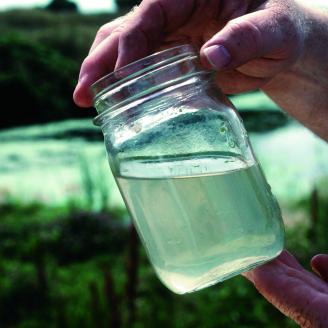
Water quality from nutrient and pesticide runoff
Water bodies require nutrients, such as nitrogen and phosphorus, to be healthy, but too many nutrients can be harmful. Many of our nation’s waters, including streams, rivers and wetlands are affected by applied nutrients to neighboring fields. The effect to a given water body depends on its location and the source of nutrients.
High levels of nitrate in drinking water can cause serious public health concerns. Additionally, increased nitrogen and phosphorus levels in water can produce excessive aquatic vegetation and algal blooms resulting in reduced dissolved oxygen, harmful toxins, and increased water temperature. In extreme cases dissolved oxygen may be so low that dead zones, known as hypoxia, exist where most aquatic life cannot survive. Algal blooms can impart an undesirable taste to potable water that is difficult to remove by water treatment. High ammonia levels are toxic to some freshwater fish species.
Common Ohio Conservation Practices
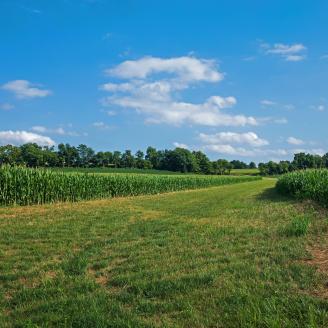
Grassed Waterway
A grassed waterway is a shaped or graded channel that is established with suitable vegetation to convey surface water at a non-erosive velocity using a broad and shallow cross section to a stable outlet.
Benefits include:
- Prevention of gully erosion
- Slows and filters water leaving the field, improving water quality.
- Farm machinery can cross

Cover Crop
A cover crop is a beneficial plant seeded into an agricultural field during or outside of the regular growing season. Its primary purpose is to improve or maintain soil health and ecosystem quality.
Benefits include:
- Reduce wind and water erosion on all types of soils throughout the year.
- Improve soil tilth when plant roots grow into compacted areas.
- Protect the soil surface from heat and erosion, and reduce sealing.
- Increase soil organisms, such as earthworms, that break down residue on the field.
- Increase organic matter and break disease cycles.
- Retain nutrients lost through soil erosion and runoff, especially phosphorus.
- Balance nutrients in the soil.
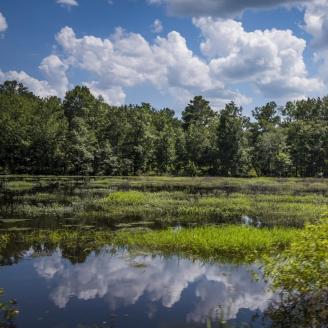
Wetland Creation / Restoration / Enhancement
Wetland restoration is the manipulation of a former or degraded wetland's physical, chemical, or biological characteristics to return its natural functions.
Benefits include:
- Wildlife habitat creation
- Reduction of downstream flooding
- Improve water quality

